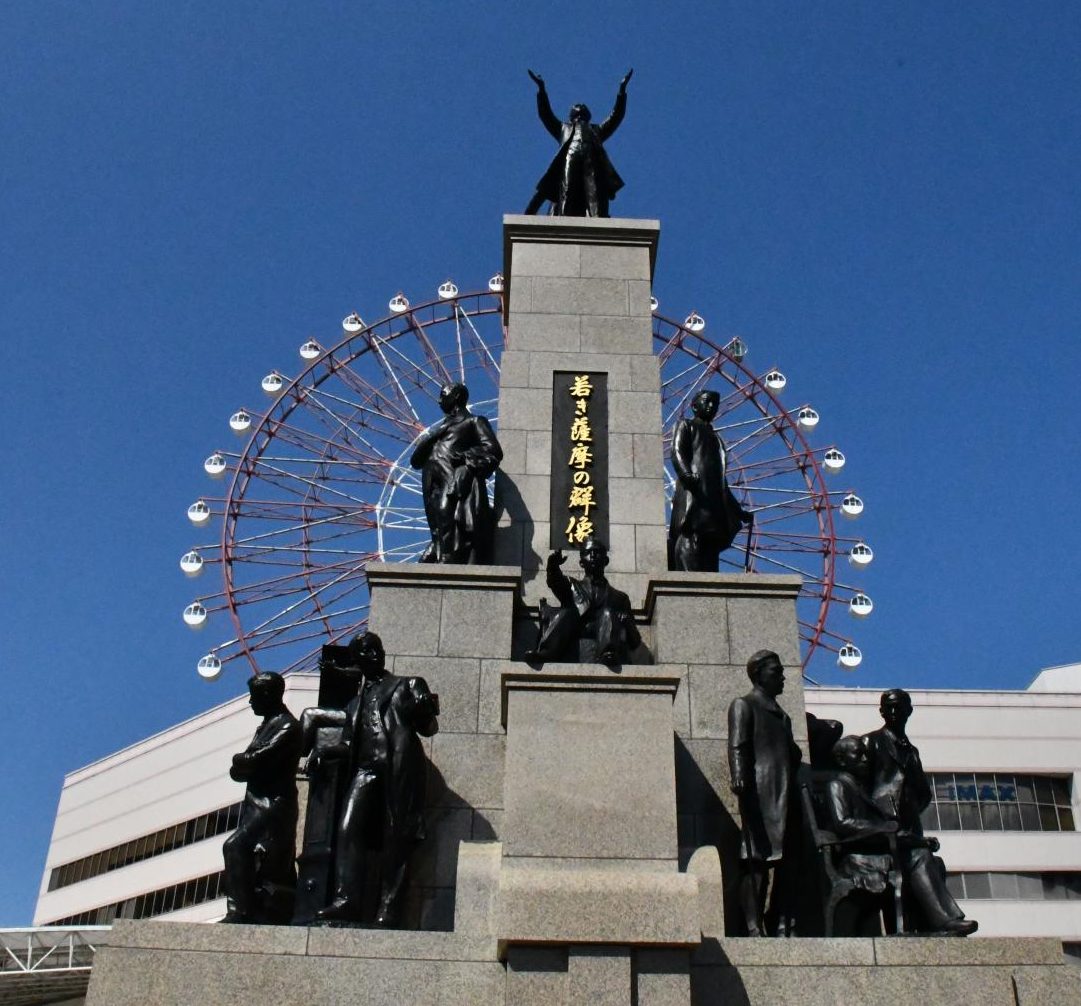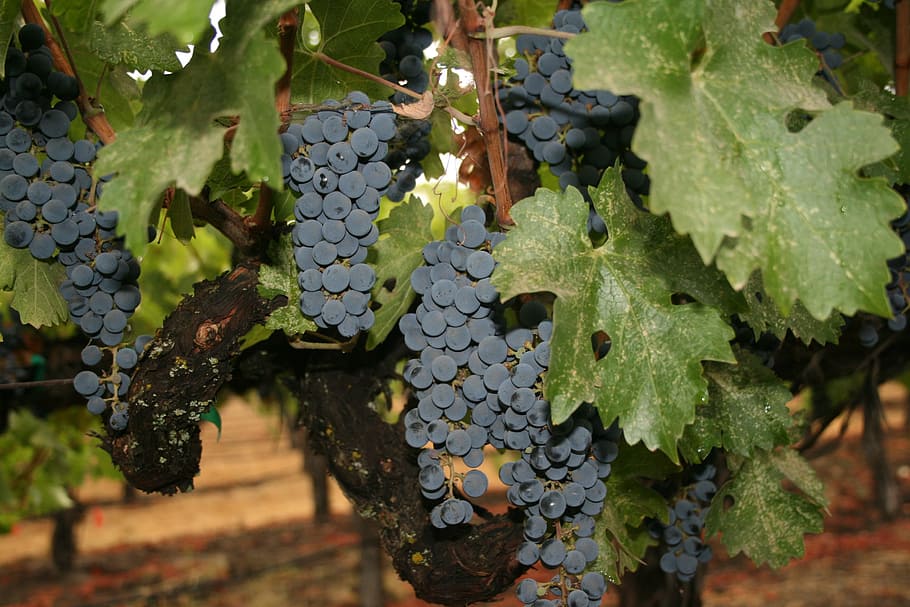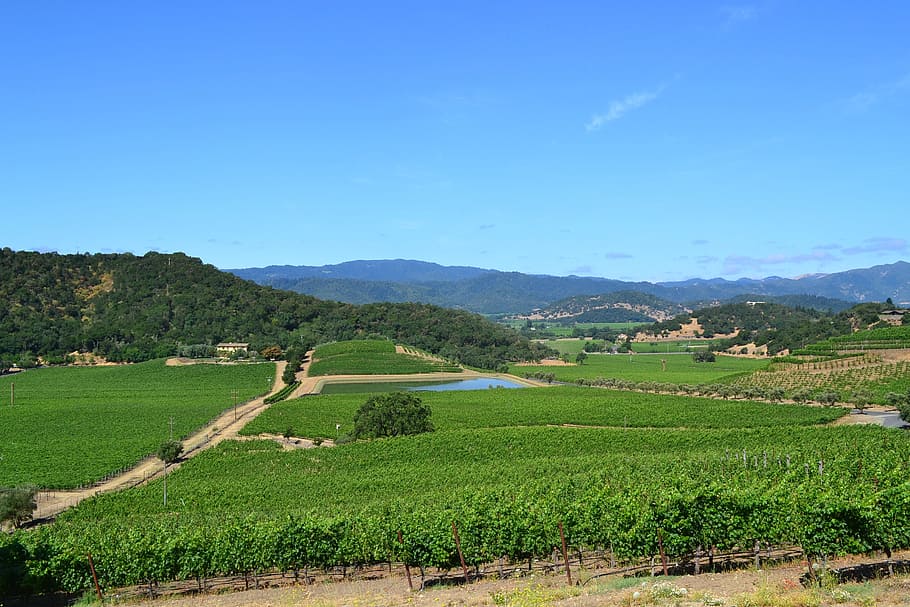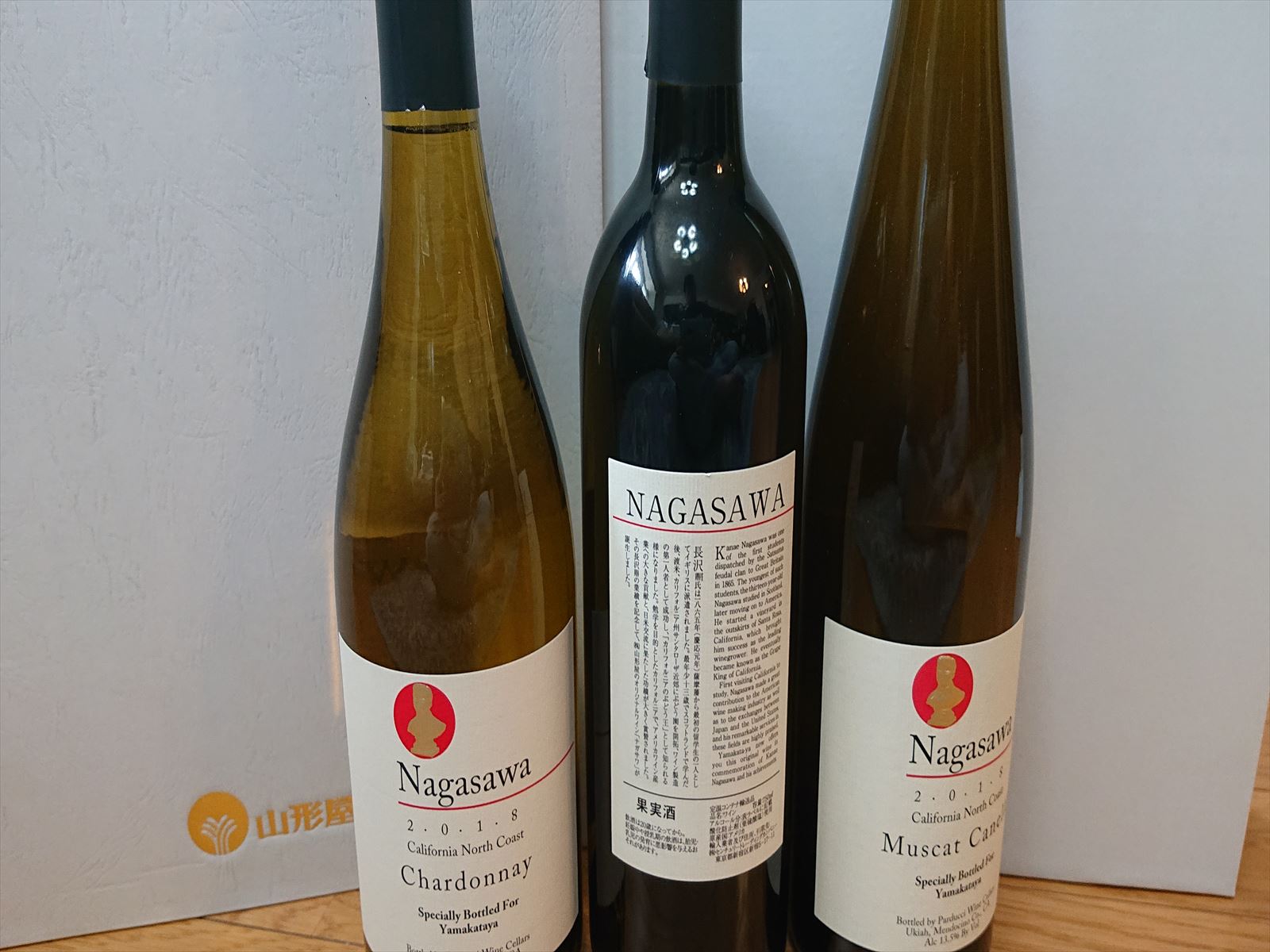企業戦略 2021.05.21
CS25 「ワイン王」になった薩摩藩士 The Satsuma clansman who became “The wine king”
目次
Copyright © Shinichiro Hatani 2021 All rights reserved
For those who prefer to read this column in English, the Japanese text is followed by a British English translation, so please scroll down to the bottom of the Japanese text.
昨年、2020年7月本コラムに投稿した「CS(企業戦略)12 - 英国で始まった『薩長同盟』The Satsuma-Choshu alliance began in England」には、「長州五傑(長州ファイブ)」の視点から描いた、次の一文を載せた。
1863年(文久3年)6月の薩英戦争、その1カ月前、5人の若者が密かに横浜港から英国に向けて出航した。派遣したのは長州藩、過激な尊王攘夷の藩が、幕府の禁制を犯してまで外国の情報を得ようと送り出したのである。後年「長州五傑(長州ファイブ)」と呼ばれた、井上馨(後の初代外務大臣)、遠藤勤助(造幣事業の父)、山尾庸三(東京大学工学部の創立者)、伊藤博文(初代内閣総理大臣)、井上勝(鉄道の父)であった。
当時、イギリスはビクトリア朝時代の最盛期である。産業革命は頂点に達し、「鉄と石炭の時代」「鉄道の時代」と呼ばれ、人々の暮らしも急速に近代化が進んでいた。ロンドン市街を地下鉄が初めて走ったのも、この年である。当時の日本と英国の「文明開化」の度合いが如何に違っていたか。5人が寄宿したのは、UCL(ユニバーシティ・カレッジ・オブ・ロンドン:現在の「ロンドン大学」の最古カレッジ)の化学教授、ウィリアムソン博士宅であった。英国学士院会員で、ロンドン化学協会の会長という要職にあり、偏見の無い国際的な視野の持ち主であったため、日本人の寄宿先に選ばれたようである。
彼らは、ウィリアムソン博士夫妻から英語を学んだが、その上達は驚くほど早く、しばらくすると辞書を片手に、夫妻に質問しながら新聞が読めるほどになったと言われている。博士の紹介によって、UCLに法文学部聴講生という資格で入学が許され、「ロンドン大学の初めての日本人留学生」となったのである。長州藩への報告のため、彼らはロンドン市街を積極的に見て歩いた。国会議事堂や大英博物館をはじめ、図書館、上下水道、病院、公園、銀行、郵便局、劇場など、当時世界で最高に繁栄、進化した文明国であった英国から多くのものを学んだのである。
2年後、長崎グラバー商会の斡旋で、薩摩藩からの留学生達がロンドンに到着した。薩摩藩の一行は留学生15人(町田民部・畠山丈之助・村橋直衛・名越平馬・市来勘十郎・中村宗見・田中静洲・東郷愛之進・鮫島誠蔵・吉田己二・森金之丞・町田申四郎・町田清蔵・磯長彦輔・高見弥一)、視察員4人(新納刑部・松木弘安・五代才助(友厚)・堀壮十郎)の計19人であった。

1.19名の「薩摩藩遣英使節団」派遣の背景
「長州五傑(長州ファイブ)」と呼ばれるように、長州藩は5人の20代の若者を英国に渡航させたが、薩摩藩は長州藩の3倍近い、19名を「薩摩藩遣英使節団」として英国に密航させた。しかも、そのなかには10代の人間を何人か選抜した。「若い感性でなければ学べないものを学ばせよう」という意図があったのではないだろうか。最年少は、磯長彦輔、13歳の少年であった。幕府から海外渡航が固く禁止されていたため、「長澤鼎(ながさわ・かなえ)」という名前を藩は与えた、そしてその名前を磯長彦輔は生涯貫くことになったのである。
なぜ、この「海外渡航が厳しく禁止されている時代」に19名もの多人数を英国に送り出したのか。その背景としては、二つのことが挙げられるだろう。一つは、薩英戦争で英国海軍の圧倒的な実力を見せつけられた薩摩藩は、「進んだ西洋の技術を学び取ることが急務」と考えたためであろう。また、もう一つは薩摩藩の幕末期には、島津重豪(しげひで)、島津斉彬(なりあきら)達、「眼を世界に開く慧眼を持った藩主の存在」があったことであろう。彼らの存在無くして、多大な出費を必要とする英国へ19名もの派遣は叶わなかったであろう。昨年2020年1月29日、本コラムに投稿した「CS(企業戦略) 1ー『はやぶさ』が教えるキャプティブ Captives taught by “Hayabusa”」に以下のように記した。
2. 幕末の主役の一人
50年ほど前のアポロ計画によって持ち帰った「月の石」が展示されているのが、米国を代表する博物館、スミソニアン博物館である。10数年前、同博物館で日本の幕末に由来するものが発見された。かつて、NHK大河ドラマ「篤姫」で有名になった、江戸幕府第13代将軍徳川家定の正室、天璋院篤姫(あつひめ)の駕籠であった。
幕末ペリーが来航した頃、26歳で幕府の頂点、老中首座に就き幕政の中心を担っていたのが、備後福山藩主の阿部正弘であった。「しがらみや古いしきたりによって政治をおこなうようでは、この国難に対処することはできない」と譜代のみならず外様大名にも広く意見を聞いたが、実は彼らには地政学上の共通点があった。
すべて太平洋、日本海、玄界灘などの外洋に面していたのである。海からやってくる列強と戦うには「外洋に面した藩であれば当然海防問題にも優れた意見と知識を持っている」、そう阿部に具申したのが、篤姫が将軍家への輿入れに際し養父となった薩摩藩第11代藩主の島津斉彬(なりあきら)であった。
3. 欧米列強への対抗戦略
斉彬は1809年、第10代藩主島津斉興の長男として誕生した。母親の生家池田家は、安土桃山時代の池田恒興に始まり、その子輝正は徳川家康の次女と結婚、播磨姫路藩52万石を領した。中国地方の備前岡山、因幡鳥取の一族の総石高は60万石を超え、「西国将軍」と呼ばれるまでになっていた。明治維新の土台をつくった斉彬は、実は皮肉なことに徳川家康の血を引いていたのである。
斉彬は幼少より、その曾祖父8代藩主重豪(しげひで)に寵愛された。重豪は開明派、長崎オランダ商館医シーボルトともオランダ語で会話したほど洋学に造詣が深かった。この影響もあって、斉彬は西洋の技術に高い関心と興味を示し、反射炉、溶鉱炉の建設、地雷、水雷、ガラス、ガス灯の製造など、アジア初の近代様式工場群、いわゆる集成館事業を推進、藩の富国強兵に努め、明治維新への基盤をつくった。
2.「若き薩摩の群像」
「薩摩藩遣英使節団」(Satsuma Students Mission)と呼ばれている彼ら19名は、1982年「鹿児島市50万都市達成記念事業」として鹿児島中央駅前に製作された「若き薩摩の群像」のモニュメントにその姿を見ることができる。
彼らの行動は、まるで「スポンジが水を急速に吸い込んでいく」ように、英国の最先端の技術を学び、日本にもたらした。その一つが紡績である。英国で紡績機を購入、1867年(慶応3年)磯(現在の鹿児島市吉野町磯)に日本初の洋式紡績工場「鹿児島紡績所」を設立したのである。
個々人のレベルでも、19名の中から後の明治政府の高官が何人も輩出された。森有礼(もりありのり)は初代文部卿(文部大臣)、畠山義成(はたけやまよしなり)は東京開成学校(後の東京大学)校長、松木弘安(改名後、寺島宗則)は外務卿(外務大臣)となり条約改正に努めるなど、また彼ら以外も全員政界や実業界で活躍したのである。

3.ワイン王への第一歩
「カリフォルニアのワイン王 薩摩藩士・長沢 鼎 (上坂 昇著 明石書店刊)」によると、最年少であった長澤は年齢が13歳と若すぎたため英国に渡っても大学には入学できず、英国北部スコットランドの街でホームステイをしながら学校に通い、非常に優秀な成績を収めたということである。約2年後、過半数の留学生は帰国したが、長澤と他5人は新興宗教家で思想家のトーマス・レイク・ハリスと出会い、彼の教団コロニーがあった米国ニューヨーク州に渡り、ブドウの栽培やワインの醸造に従事しながら、他の仲間達と自給自足の共同生活を送った。その後、長澤以外の藩士5人は日本へ帰国、長澤だけが米国に残った。
やがて、ハリスはニューヨーク州のコロニーを解散したが、1875年長澤はハリスの一家と共にカリフォルニア州ソノマ郡の「サンタローザ」に移住した。その地は「ワイン作りには最高の気候風土」ではあったが、「全くの未開地」であり、山を切り崩し、畑を作り、木を植え、原野を開拓して、ブドウ栽培、ワインの醸造に勤しむ生活が始まった。
こういった長澤の存在は、日本ではほとんど知られていなかったが、1983年11月来日したロナルド・レーガン米国大統領が、国会でおこなったスピーチで多くの日本人の知るところとなった。そのスピーチは、RONALD REGAN Presidential Library & Museumの公式Webサイトにある「Address Before the Japanese Diet in Tokyo November 11, 1983」https://www.reaganlibrary.gov/archives/speech/address-japanese-diet-tokyo にある。
このスピーチで、レーガン大統領自身が選んだ「三人の日本人」の一人に、福沢諭吉、松尾芭蕉と並んで長沢鼎の名を以下のように挙げたのである。
In 1865 a young Samurai student, Kanaye Nagasawa, left Japan to learn what made the West economically strong and technologically advanced. Ten years later he founded a small winery at Santa Rosa, California, called the Fountaingrove Round Barn and Winery. Soon he became known as the grape king of California. Nagasawa came to California to learn and stayed to enrich our lives. Both our countries owe much to this Japanese warrior-turned-businessman.
筆者訳:1865年、若きサムライ学生、長沢鼎は、経済的に強く、技術的にも進んでいる西洋の特徴を学ぶために日本を離れた。その10年後、彼はカリフォルニア州サンタローザに小さなワイナリー「ファウンテングローブ・ラウンド・バーン・アンド・ワイナリー」を設立した。やがて彼は、カリフォルニアのブドウ王と呼ばれるようになった。長澤は、カリフォルニアに学びに来て、カリフォルニアに留まり、私たちの生活を豊かにしてくれた。日本の武士からビジネスマンに転身したこの人物に、日米両国は多くの恩義を感じている。
4.「ワイン王」へ
長澤は「ワイン作りにはカンではなく科学が必要」と様々な人々に教えを請い、最新の醸造技術を学んだ。また、カリフォルニア・ワインを高級ワインへと育て上げるため、「ワインの本場」フランスに特約店も設け、フランスのぶどうの苗木を輸入するなど、懸命に努力、その結果、長沢が所有した「ファウンテングローブ・ワイナリー」は大きな成功を収めていった。
しかし、この頃、「時代の黒い影」が忍び寄ってきた。日系人排斥の動きである。しかし、彼のワイナリー地域にいた日本人は長沢ただ1人であったため、日系排斥の対象にはなることなく、かえって人々からは「バロン(男爵)・ナガサワ」「プリンス・ナガサワ」と尊敬されつづけていた。地元へも多大な貢献を果たし、弛まずブドウの品種改良などおこなっていたことを知ったカリフォルニア大学からも、「カリフォルニアのワインを世界標準にしよう」と多くの技術的援助が寄せられた。これらの結果、ワインに適した非常に品質の良いブドウが育ち、彼のワイナリーの業績はカリフォルニアで一二を争うほどになっていった。
時には集中豪雨、渇水、病虫害等で5万本すべてのぶどうの木を失ったこともあったが、全般的には好調であったビジネスが、1919年制定され翌年から施行された「禁酒法」によって大打撃を受けた。1933年までは酒の販売が認められなかったからである。そして1934年、ようやく「酒の販売」が認められるようになったことを確認するように、その年の3月1日、彼は亡くなった、享年82歳であった。
ワイナリーは甥が継いだが、「CS23ー第442連隊戦闘団「当たって砕けろ!」442nd Regimental Combat Team “Go for broke!”」で記したように、1913年制定された外国人の土地所有を禁じた「外国人土地法」によって、莫大な土地財産は相続できず他人の手に渡り、彼はファウンテングローブを追われ、日系人キャンプへ送られた。
その後、ワイナリーの一部は「パラダイスリッジ・ワイナリー」として新しい経営者によって継承され、「ナガサワ・ワイン」のブランドで現在も販売され、一連の彼の功績を称え、サンタローザ市は2007年、農園跡地に「ナガサワ・コミュニティー公園」を作った。

5.サムライ 長沢 鼎
そんな、「パラダイスリッジ・ワイナリー」は、敷地内に設立された長澤記念館や、サンタローザ市のシンボルであった「ラウンドバーン」という建物も、2017年10月のカリフォルニアの大火で焼失してしまった。
長澤は、大小の日本刀を生涯持っていたと言われている。「武士の魂」と言われる刀を生涯離さなかった。ある意味、誰も知らない場所で、一人で生き抜いていくための「自分の魂」と思って大事にしたのでは無いだろうか。「武士道精神」であろう。
しかし、この武士道精神が彼の日本への転居を妨げたのではないだろうか、薩摩藩からは「新しい国づくりのための勉強を」と指示されたが、「ワイン」では武士の沽券に触ると思っていたのではないだろうか。明治維新で既に「薩摩藩は存在しない」のにも関わらず。「サムライ」である。
日本で現在の戸籍が出来たのは明治維新後である。武士には戸籍はなかった。何度か一時帰国をした長澤であったが、1910年、58歳で日本の戸籍を作った、「磯長彦輔」でなく、「長沢鼎」として。その戸籍は、「磯長家」のなかに、「磯長家 長沢鼎」としてつくられたのである。

本コラムを書くにあたって、「『長澤ワイン』のその後」を調べたところ、鹿児島の老舗百貨店「山形屋」でその継承ワインがつくられているのが解り購入した。その写真である。ワインボトルの裏ラベルには以下の言葉が記されている。
長澤鼎(かなえ)氏は一八六五年(慶応元年)薩摩藩から最初の留学生の一人としてイギリスに派遣されました。最年少十三歳でスコットランドで学んだ後、渡米、カリフォルニア州サンタローザ近郊にぶどう園を開拓、ワイン製造の第一人者として成功し、「カリフォルニアのぶどう王」として知られる様になりました。勉学を目的としたカリフォルニアで、アメリカワイン産業への貢献と、日米交流に果たした功績が大きく賞賛されました。その長沢鼎の業績を記念して、(株)山形屋のオリジナルワイン「ナガサワ」が誕生しました。
When I was writing this column, I looked up the history of “Nagasawa Wine” and found that the inherited wine was made in Yamagata-ya, a Long-established department store in Kagoshima. Here is the photo. The following words are written on the back label of the wine bottle.
Kanae Nagasawa was one of the first students from the Satsuma clan to be sent to England in 1865. After studying in Scotland, where he was the youngest student at the age of 13, he moved to the United States, where he established a vineyard near Santa Rosa, California, and became a successful winemaker, known as the “Grape King of California”. In California, where he had come to study, he was greatly admired for his contribution to the American wine industry and for his role in the exchange between Japan and the United States. In commemoration of Kanae Nagasawa’s achievements, Yamagata-ya’s original wine “Nagasawa” has been created.
今回のまとめ
若干13歳で渡英、更には英国から米国へと「自らの力で自らの途」を切り開いていった。戦後、日本の復興のために海外を目指した電器メーカー、自動車メーカーに代表される日本の急成長を支えた企業経営者の姿を彼に見る思いである。「その原動力は何だったのだろうか」と思う時、彼が捨てなかった「武士道」の存在を感じる。
「武士道」は武士が生きていく上で守るべき「倫理、道徳規範そして価値基準の根本」である。これを企業に例えると、ミッション、つまり「『企業が、社会に対してどのような役割を果たすべきと考えているかという理念』を企業が定義して社会に表明したもの」である。この「ミッション」のもとに、企業が「どの分野・事業領域で生存していくか、いくべきか」という領域「戦略ドメイン」を決めて事業活動をおこなっていく。したがって、企業の戦略、戦術、アクション・プランは、すべて「ミッション」に基づく「戦略ドメイン」との整合性がなければならない。
また、この戦略ドメインは、従業員、顧客、株主等の利害関係者(ステークホルダー)から広く支持され受け入れられていなければ事業活動にプラスに働くことはない。この経営とステークホルダーとの戦略ドメインに関する認識の共有を「ドメインコンセンサス」と呼ぶが、それが強ければ強いほど、事業を浮揚させる「無償の力」を得ることになるからである。したがって、より強いドメインコンセンサスを得るように戦略ドメインを定義することほど重要な経営判断はない。
長澤は、最後まで守り続けた「武士道」というミッションのもと、戦略ドメインを「ワイン造り」に置き、その分野に集中して努力を重ねた末の成功であったのではないだろうか。薩摩藩からは「新しい産業技術導入の先兵」としての期待を委ねられ渡英したが、自身の「ドメインコンセンサス」を「ワイン造り」に置いた。それは自らの武士道が求めるものを「どんな地に於いても日本人として恥ずかしくない成功者になる」と受け止めたからではないだろうか。そして、その国のトップにまで畏敬の念を持って語られるまでの存在になった。
企業戦略でよく言われる「選択と集中」、しかしこの言葉も、「何を基に語るか」によって大きく異なってくる。「多角化経営」のスローガンのもと、世界的な電機メーカーとなった日本企業が相次いで「事業の集中化=リストラクチャリング」を進めている昨今。これを範として自らの事業分野の見直しをする企業も多い。しかし、その方法としては「ただのリストラクチャリング=事業売却・撤退」という企業も多いのではないだろうか。
リストラクチャリングは「事業の売却・撤退」ではない、「再成長するために投資をより効率的におこなっていくための戦略」である。「リストラクチャリング有りき」ではなく、「自らの企業のミッション」を再設定して「戦略ドメイン」を明確にして「おこなうべき投資先を明確にすること」が企業の成長のためには必須の戦略である。本格的なリスクマネジメント無くしてそれをおこなうことは不可能である。グローバル・リンクが「キャプティブの設立を視野にした本格的なリスクマネジメントを申し上げている理由がここにある」のである。長沢鼎は我々にそのことを教えてくれているのではないだろうか。
執筆・翻訳者:羽谷 信一郎
English Translation
Corporate Strategy (CS) 25 – The Satsuma clansman who became “The wine king”
Last year, in July 2020, I wrote a column entitled “CS (Corporate Strategy) 12 – The Satsuma-Choshu alliance began in England”, which included the following passage from the perspective of the “Choshu Five”.
In June 1863, one month before the Anglo-Satsuma War, five young men had secretly set sail from the port of Yokohama for England. They were sent by the Choshu clan, a clan of radical reverence for the expulsion of the barbarians, who had violated the shogunate’s ban on foreign intelligence. The “Choshu Five”, as they were later called in later years, were Inoue Kaoru (later to become the first Minister of Foreign Affairs), Endo Kinsuke (father of the minting business), Yozo Yamao (founder of the University of Tokyo’s Faculty of Engineering), Ito Hirobumi (first Prime Minister) and Inoue Masaru (father of the railway industry).
At the time, Britain was at the height of the Victorian era. The Industrial Revolution had reached its peak, and people’s lives were rapidly becoming more modernized, known as the “Age of Iron and Coal” and the “Age of the Railways”. It was also in this year that the Tube first ran through the streets of London. How different was the degree of “civilization” between Japan and Britain at that time. The five lodged at the home of Dr. Williamson, a professor of chemistry at UCL (University College of London), the oldest college in what is now known as the University of London, and a member of the British Academy. Dr. Williamson was a member of the British Academy and President of the Chemical Society of London, a man of international outlook with no prejudices, and thus was apparently chosen as a place for the Japanese to spend the night.
They learned English from Dr. Williamson and his wife, and their progress was so rapid that after a while they could read a newspaper with a dictionary in hand, asking them questions. It was through his introduction that he was admitted to UCL as an auditing student of the Faculty of Law and Letters, becoming “the first Japanese student at the University of London”. In order to report to the Choshu Clan, they actively toured the city of London. They learned many things from Britain, the most prosperous and advanced civilized country in the world at that time, including the Houses of Parliament and the British Museum, libraries, water and sewage systems, hospitals, parks, banks, post offices, and theaters.
Two years later, a group of students from the Satsuma clan arrived in London under the auspices of the Nagasaki Glover Company. The Satsuma Clan group consisted of 15 foreign students (Minbu Machida, Jokunosuke Hatakeyama, Naoe Murahashi, Hyouma Nagoshi, Kanjuro Ichiki, Munemi Nakamura, Seisyu Tanaka, Ainoshin Togo, Seizo Samejima, Keiji Yoshida, Kinnojyou Mori, Shinshiro Machida, Seizo Machida, Hikosuke Isonaga, and Yaichi Takami), and four inspectors (Shinnou Gyobu, Hiroyasu Matsuki, Saisuke Godai (Tomoyuki), and Sojuro Hori). There were 19 in total.
1. Background of the 19-member “Satsuma Clan Mission to Britain”
The Choshu clan sent five young men in their twenties to Britain, but the Satsuma clan sent nineteen men, almost three times as many as the Choshu clan, on a secret mission to Britain. The Satsuma clan smuggled 19 people, three times as many as the Choshu clan, to Britain as part of the Satsuma Mission to Britain, and selected some of them as teenagers. The youngest was Hikosuke Isonaga, a boy of thirteen. Because he was forbidden by the shogunate to travel abroad, the clan gave him the name “Kanae Nagasawa”, a name which he would carry for the rest of his life.
Why did the clan send 19 people to England at a time when travel abroad was strictly forbidden? Two reasons may be cited. The first was that the Satsuma clan, having been shown the overwhelming power of the British navy in the Anglo-Satsuma War, felt that it was urgent to learn the advanced technology of the West. The other reason was the presence of Shjgehide Shimazu, Nariakira Shimazu and other leaders of the Satsuma clan who had the ability to open their eyes to the world. Without them, it would not have been possible to send 19 men to Britain, which would have required a great deal of expense. I wrote about this in my article “CS (Corporate Strategy) 1 – Captives taught by “Hayabusa”” on January 29, 2020 as follows.
2. One of the main actors of the Bakumatsu
The Smithsonian Institution, one of the most important museums in the United States, is the home of the “moonstone” brought back by the Apollo mission some 50 years ago. More than a decade ago, the museum discovered an object from the end of the Japanese Tokugawa shogunate, a palanquin belonging to Princess Atsuhime, the wife of the 13th shogun of the Edo shogunate, Iesada Tokugawa, made famous by the NHK historical drama “Atsuhime”.
At the time of Perry’s arrival at the end of the Tokugawa Shogunate, Masahiro Abe, the feudal lord of Bingo-Fukuyama Domain, was 26 years old and at the top of the shogunate. In fact, they all had one thing in common in terms of geopolitics: they all faced the open seas of the Pacific, the Sea of Japan and the Genkai Sea. Nariakira Shimazu, the 11th feudal lord of the Satsuma clan, who became Atsuhime’s adoptive father when she was taken into the Shogun’s family, suggested to Abe that “clans facing the open sea would naturally have superior opinions and knowledge on maritime defense issues” in order to fight against the powers coming from the sea.
3. Strategy against the Western powers
Nariakira was born in 1809 as the eldest son of Narioki Shimazu, the 10th lord of the clan. His mother’s family, Ikeda family, started from Tsuneo Ikeda in Azuchi-Momoyama period (1573-1603). His son Terumasa married the second daughter of Ieyasu Tokugawa and held 520,000 koku of Harima-Himeji clan. In the Chugoku region, the clans of Bizen-Okayama and Inaba-Tottori had a total of over 600,000 koku, and were known as the “Western Shogun”. The irony is that Nariakira, who laid the foundation for the Meiji Restoration, was actually descended from Ieyasu Tokugawa.
As a child, Nariakira was loved by his great-grandfather Shigehide, the 8th lord of the domain. Shigehide was an open-minded man who had a deep knowledge of Western studies and even conversed with Siebold, the Dutch merchant doctor in Nagasaki, in Dutch. Due to this influence, Nariakira showed great interest in Western technology and promoted the so-called Shuseikan Project, the first group of modern factories in Asia, including the construction of reverberatory furnaces and blast furnaces, and the manufacture of land mines, torpedoes, glass and gas lamps.
2. “A group of young Satsumas”.
The nineteen members of the “Satsuma Students Mission” can be seen on the monument of “A group of young Satsumas” that was erected in front of Kagoshima Central Station in 1982 as part of the “Kagoshima City 500,000 City Project”.
Their actions were like a sponge rapidly absorbing water, learning the most advanced technology from Britain and bringing it to Japan. One of these was spinning. They bought a spinning machine in England and in 1867 established Japan’s first Western-style spinning mill, the Kagoshima Spinning Mill, in Iso (now Iso, Yoshino-cho, Kagoshima city).
On an individual level, a number of high-ranking officials of the later Meiji government were produced from among the 19 members. Arinori Mori became the first Minister of Education, Yoshinari Hatakeyama became the headmaster of Tokyo Kaisei Gakko (later the University of Tokyo), and Hiroyasu Matsuki (later Munenori Terashima) became the Minister for Foreign Affairs and worked to revise treaties.
3. The first steps to becoming The Wine King
According to the book “California’s Wine King: Satsuma Clan Warrior Kanae Nagasawa” (Noboru Kousaka, Akashi Shoten), Nagasawa was too young at 13 to attend university in England, so he stayed with a family in northern Scotland and attended school with very good results. After about two years, more than half of the students returned to Japan, but Nagasawa and five others met Thomas Lake Harris, a new religionist and thinker, and went to New York State, USA, where his cult colony was located, and lived together with other friends in a self-sufficient community, growing grapes and making wine. Later, five of the clansmen returned to Japan, leaving Nagasawa alone in the United States.
Eventually Harris dissolved the colony in New York State, but in 1875 Nagasawa and his family moved to “Santa Rosa” in Sonoma County, California, where the climate was “ideal for winemaking”, but the land was “completely undeveloped”, and Nagasawa began his life of viticulture and winemaking by clearing mountains, planting vineyards, planting trees and clearing wilderness.
The existence of Nagasawa was little known in Japan until November 1983, when US President Ronald Reagan visited Japan and gave a speech at the Diet. The speech can be found on the official website of the Ronald Regan Presidential Library & Museum at “Address Before the Japanese Diet in Tokyo November 11, 1983” https://www. reaganlibrary.gov/archives/speech/address-japanese-diet-tokyo.
In this speech, President Reagan himself named Nagasawa Ding as one of the “Three Japanese”, along with Yukichi Fukuzawa and Basho Matsuo Basho, as follows:
In 1865 a young Samurai student, Kanaye Nagasawa, left Japan to learn what made the West economically strong and technologically advanced. Ten years later he founded a small winery at Santa Rosa, California, called the Fountaingrove Round Barn and Winery. Soon he became known as the grape king of California. Nagasawa came to California to learn and stayed to enrich our lives. Both our countries owe much to this Japanese warrior-turned- businessman.
4. Becoming the “King of Wine”
Nagasawa believed that “winemaking requires science, not intuition”, and he turned to various people to help him learn the latest winemaking techniques. In order to develop California wine into a premium wine, he set up a special agent in France, the “home of wine”, and imported grape seedlings from France.
At this time, however, the “black shadow of the times” began to creep in: the exclusion of Japanese Americans. However, as Nagasawa was the only Japanese in his winery area, he was not subject to the exclusion of Japanese Americans, and was instead respected as “Baron Nagasawa” and “Prince Nagasawa”. The University of California, aware of his great contribution to the local community and his tireless efforts to improve grape varieties, offered him a great deal of technical assistance in order to “make California wine the world standard”. This resulted in the production of very good quality grapes suitable for wine, and his winery became one of the best in California.
His business was generally good, although at times torrential rains, droughts and pests caused the loss of all 50,000 vines, but he was hit hard by Prohibition, which was enacted in 1919 and came into force the following year, as the sale of alcohol was not allowed until 1933. In 1934, as if to confirm that the sale of alcohol was finally allowed, he died on the 1st of March of that year, at the age of 82.
The winery was taken over by his nephew, however, as described in “CS23 – 442nd Regimental Combat Team “Go for broke!””, due to the 1913 Alien Land Law, which prohibited foreigners from owning land, he was forced to leave Fountain Grove and was sent to a Japanese American camp.
Part of the winery was later taken over by a new owner as Paradise Ridge Winery and is still sold under the Nagasawa Wine brand. In 2007, the City of Santa Rosa created the Nagasawa Community Park on the former farm site to honor his legacy.
5. Samurai Kanae Nagasawa
The Paradise Ridge Winery, the Nagasawa Memorial Museum, and the Round Barn, a symbol of the city of Santa Rosa, were destroyed by the California fires in October 2017.
Nagasawa is said to have carried Japanese swords of two sizes throughout his life, and never let go of his sword, which he called “the soul of a samurai”. In a sense, he must have kept it as his “soul” in order to survive alone in a place where he knew no one. It was the “Bushido spirit”.
But this bushido spirit may have prevented him from moving to Japan, where he was instructed by the Satsuma clan to “study for the creation of a new country”, but he may have thought that “wine” would be a badge of honor for a samurai. After the Meiji Restoration, the Satsuma clan no longer existed. He was still the “samurai”.
It was only after the Meiji Restoration that Japan had its present family register. The samurai did not have a family register. Nagasawa returned to Japan several times, but in 1910, at the age of 58, he created a Japanese family register as “Kanae Nagasawa”, not “Hikosuke Isonaga”. The family register was created within the “Isonaga family” as “Isonaga family, Kanae Nagasawa”.
Summary of this issue
At the age of just 13, Nagasawa moved to England and then from England to the United States, making his own way on his own. In him, we see a picture of the business leaders who supported the rapid growth of post-war Japan, such as the electrical appliance and automobile manufacturers who went abroad to help Japan recover. When I ask myself what was the driving force behind his success, I am reminded of “the Bushido” principles that he never abandoned.
Bushido is the code of ethics, morals and values that a samurai must live by. If we compare this to a company, we can say that a company’s mission is its definition of what it believes its role in society should be. Based on this “mission”, the company decides on the “strategic domain”, which is the area in which the company will or should survive, and carries out its business activities. Therefore, all the company’s strategies, tactics and action plans must be consistent with the “strategic domain” based on the “mission”.
The strategic domain must be widely supported and accepted by the company’s stakeholders, including employees, customers and shareholders, in order to have a positive impact on business activities. This shared understanding of the strategic domain between management and stakeholders is called “domain consensus”, and the stronger it is, the more “free power” it has to buoy the business. Therefore, no business decision is more important than defining strategic domains in such a way as to achieve a stronger domain consensus.
Nagasawa’s success was probably due to the fact that he placed his strategic domain in “winemaking” and concentrated his efforts in that area, in line with his mission of “Bushido”, which he kept to the end. The Satsuma clan expected him to be a pioneer in the introduction of new industrial technology, but he came to England with a consensus that his domain was winemaking. However, his “domain consensus” was “winemaking”, because he believed that this was what Bushido demanded of him: “to be a successful Japanese man who would not be ashamed to be a Japanese man in any place”. He became a man who was spoken of with awe and respect by the leaders of his country.
“Selection and concentration” is a common phrase in corporate strategy, but it differs greatly depending on the basis on which it is used. Under the slogan of “diversified management”, Japanese companies, which have become world-famous electronics manufacturers, are now concentrating on restructuring their businesses. Many companies are following this example and reviewing their own business areas. However, many of these companies are probably thinking of restructuring as simply selling or exiting their businesses.
Restructuring is not about selling or exiting a business, it is a strategy to invest more efficiently in order to grow again. Restructuring is not about “restructuring”, it is about re-defining the mission of the company, defining the strategic domains and identifying the investments to be made. It is impossible to do this without serious risk management. This is why Global Link is “talking about full-scale risk management, with a view to setting up a captive”. Perhaps that is what Kanae Nagasawa is trying to tell us.
Author/translator: Shinichiro Hatani

